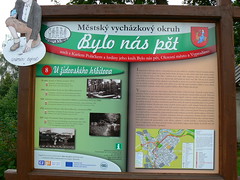
Saturday: Finding Bunkers
Saturday morning the clouds were thick and full of rain. That was ok because we planned on spending a lot of the day underground in a bunker. After a delicious breakfast of scrambled eggs and all the trimmings, we were off.
Prior to WW2, the Czechoslovaks could feel the world around them changing. As a preemptive measure against invasion they made several alliances with France and Russia and then began fortifying their
 borders. They built scores of bunkers in the hopes of staving off invades long enough to give their allies time to swoop in and save them. Unfortunately, Czechoslovakia was carved up in the Munich Treaty, betrayed by her allies and invaded regardless of her efforts at defending herself.
borders. They built scores of bunkers in the hopes of staving off invades long enough to give their allies time to swoop in and save them. Unfortunately, Czechoslovakia was carved up in the Munich Treaty, betrayed by her allies and invaded regardless of her efforts at defending herself.Now, when H said bunker I was thinking "tank size" with a soldier or two manning some guns. There are bunkers in the system like this, but Haniča was on a scale I couldn't imagine. It was designed for 420 soldiers (!!!) and had the feeling of being in the bowels of a ship. (www.hanicka.cz) The parking lot is about 2k from the entrance so there is a nice walk through the forest before going the 38 meters below ground. The tour takes about an hour and is very cool, as well as cold as the interior stays around 8 degrees Celsius.
Our second stop of the afternoon was less heavy, definitely lighter. It was in the village of Vamberk to see a lace exhibition (http://www.moh.cz/2010_img/vamberk201006.pdf). Vamberk and the Orlicke Hory region is known for their long history of handmade lace. It just goes to show how those Czech golden hands really can do anything!

After dinner in Rychnov's local pizzeria, which surprised us with its sophisticated menu including veal, saffron rice and wild mushroom dishes, we decided to follow the trail of Karel Polacek's book "Bylo nas pet" (There were Five/translated: We
 were a Handful). The book is a memoir of his childhood. As you follow the map from sign to sign you learn about the places and people of a small town in the 1930s through the eyes of this little Jewish boy. The signs show photos of how the town looked at that time and give the historical significance of each site.
were a Handful). The book is a memoir of his childhood. As you follow the map from sign to sign you learn about the places and people of a small town in the 1930s through the eyes of this little Jewish boy. The signs show photos of how the town looked at that time and give the historical significance of each site.
No comments:
Post a Comment